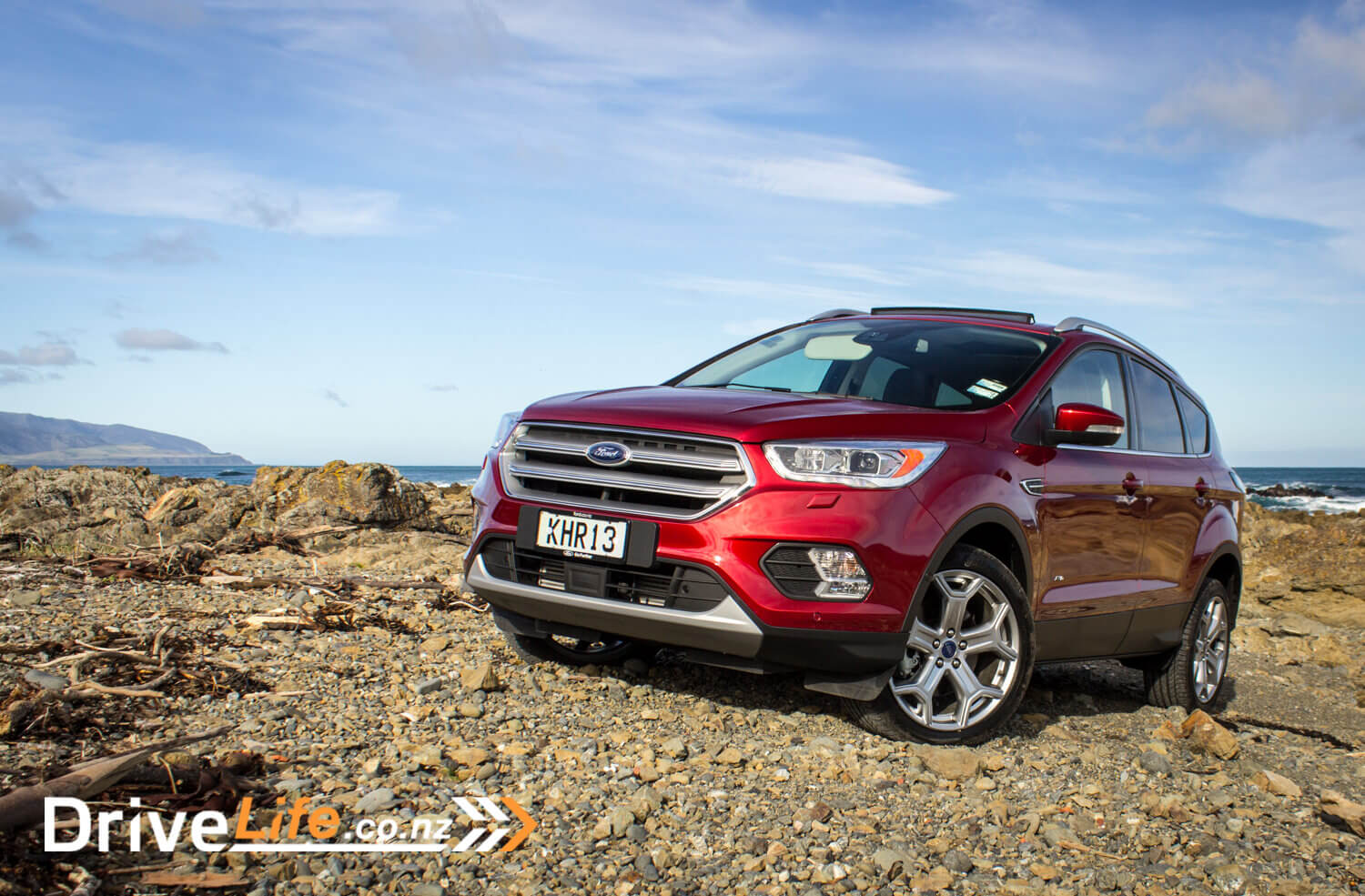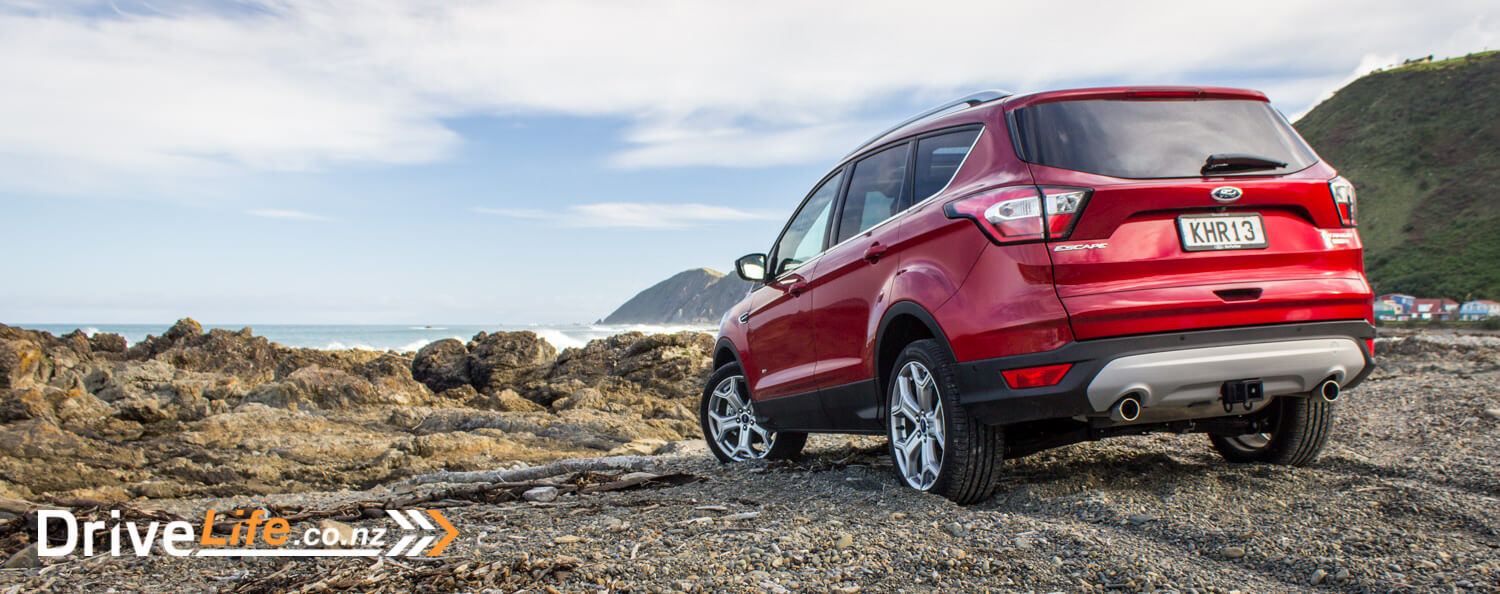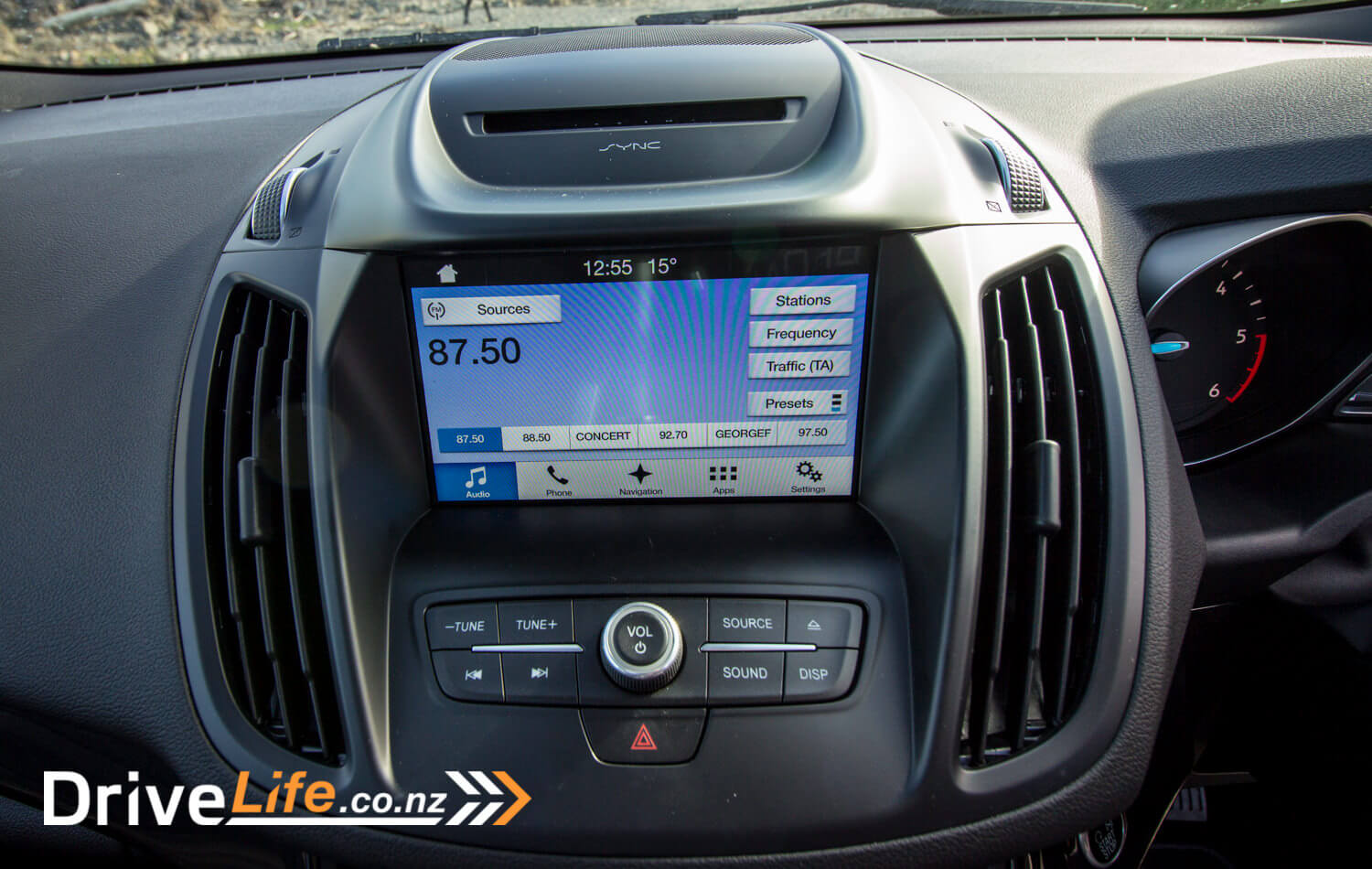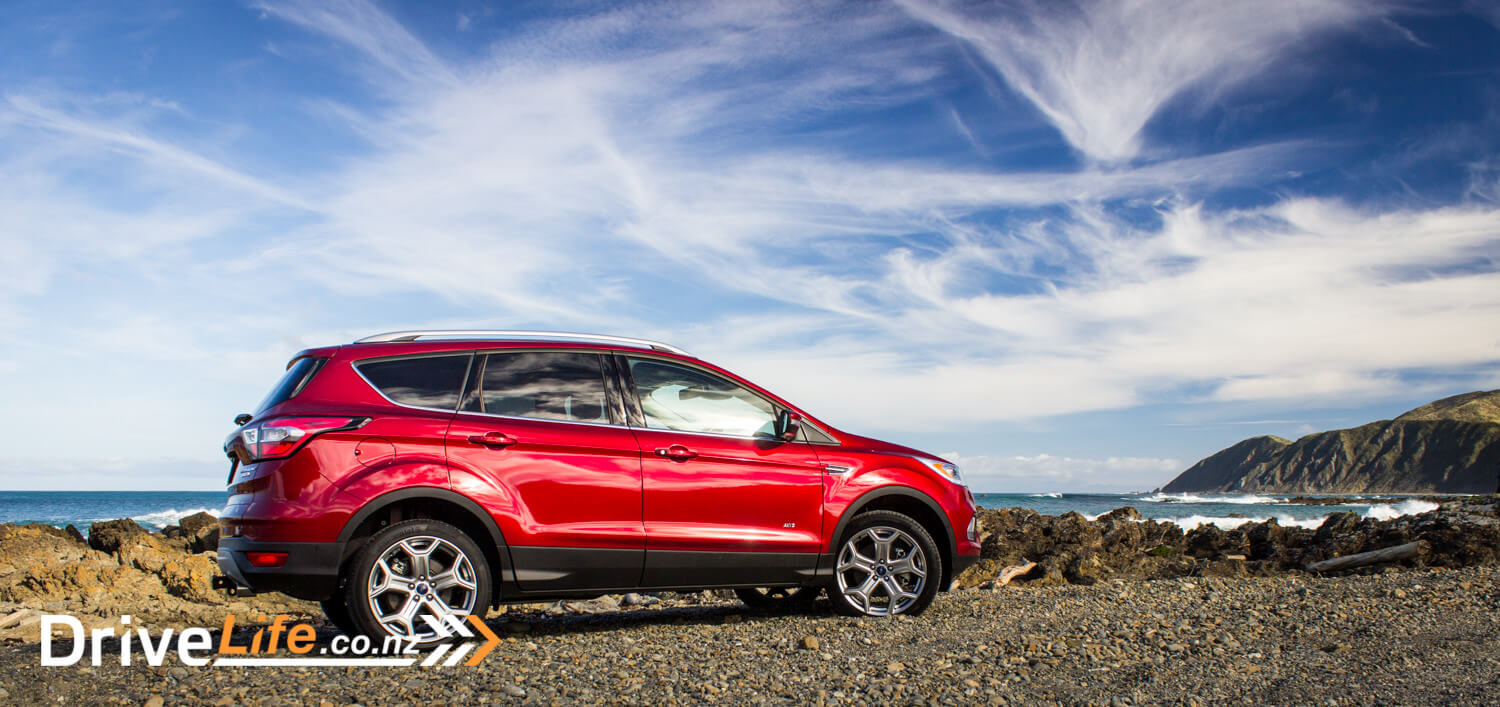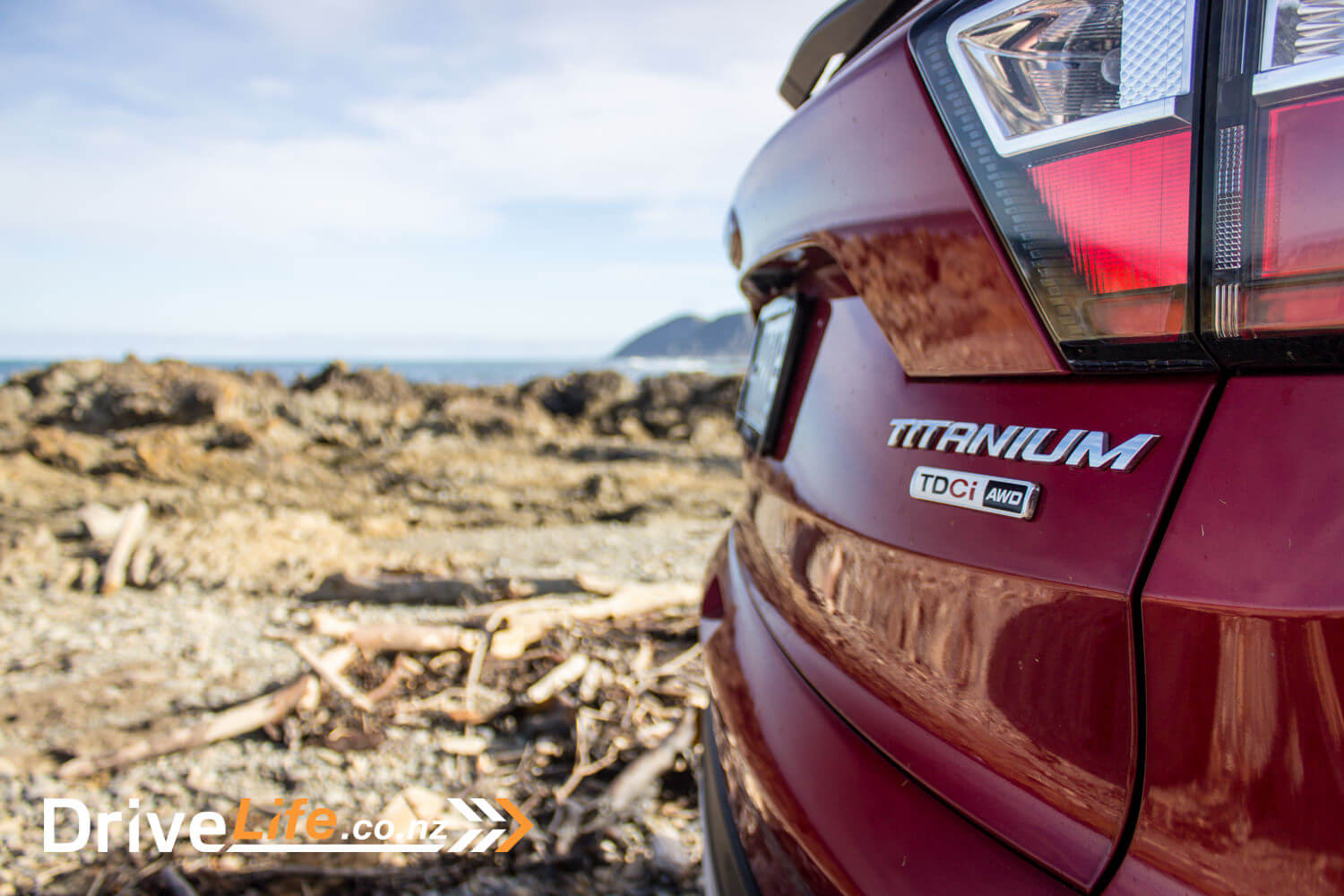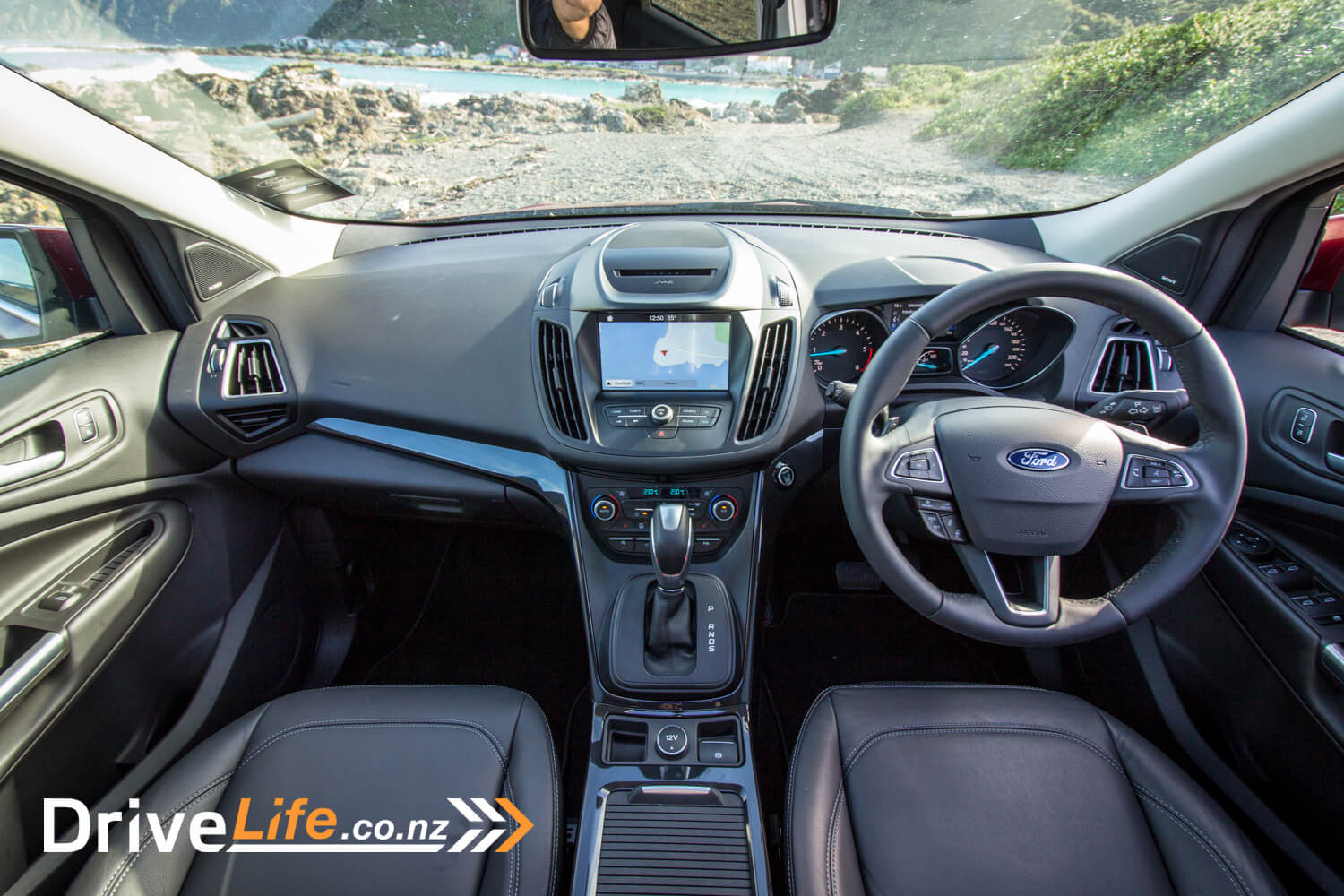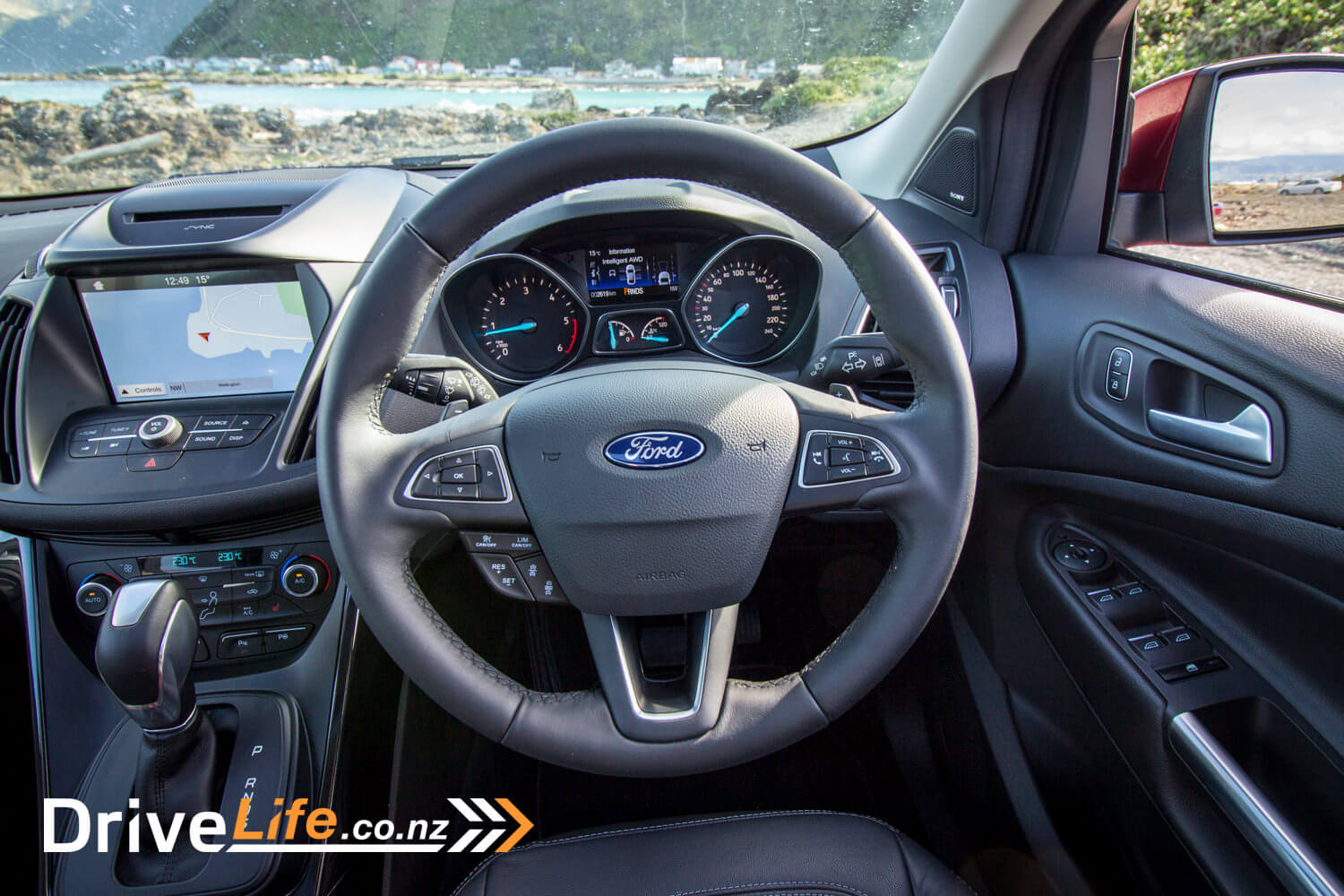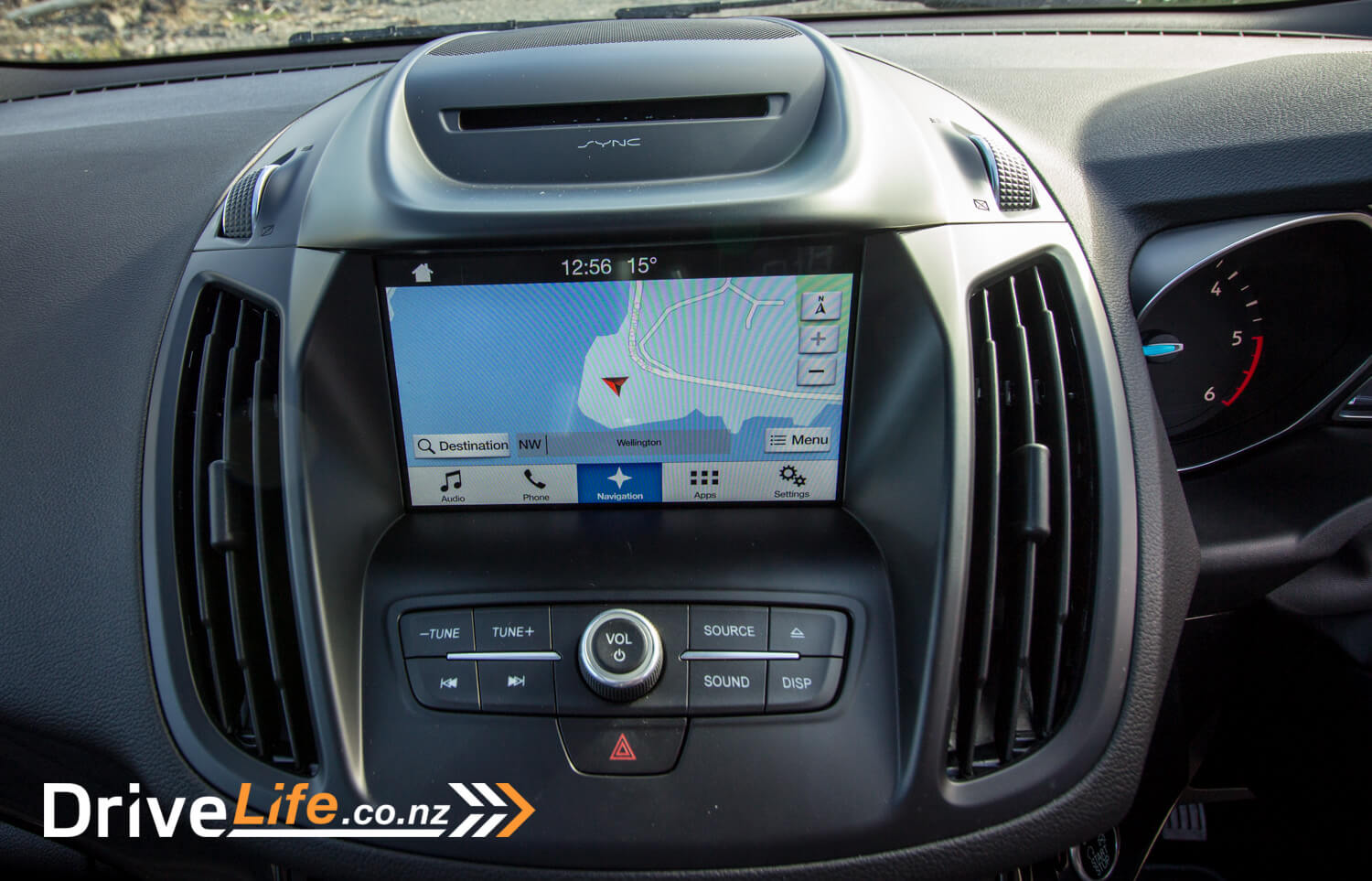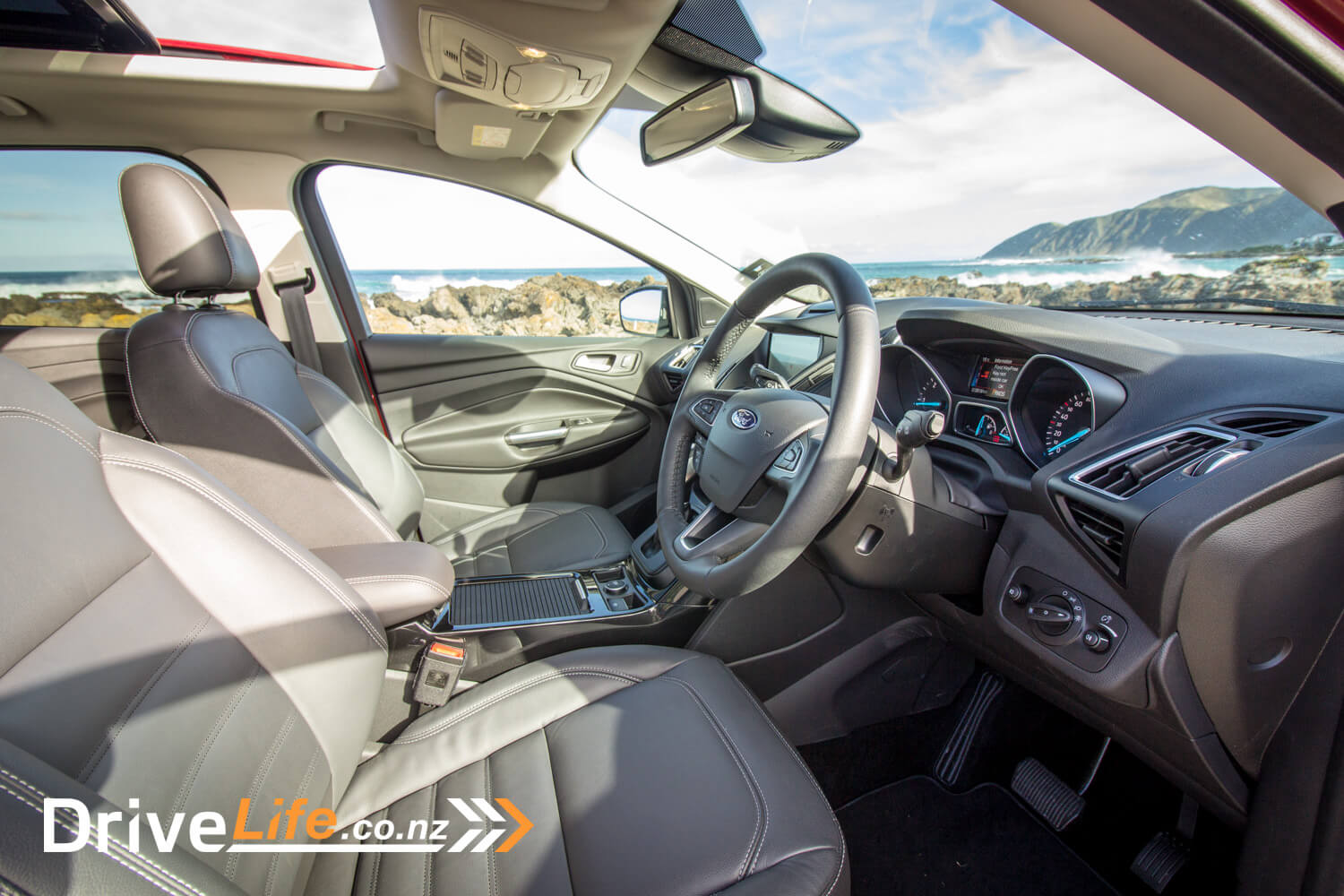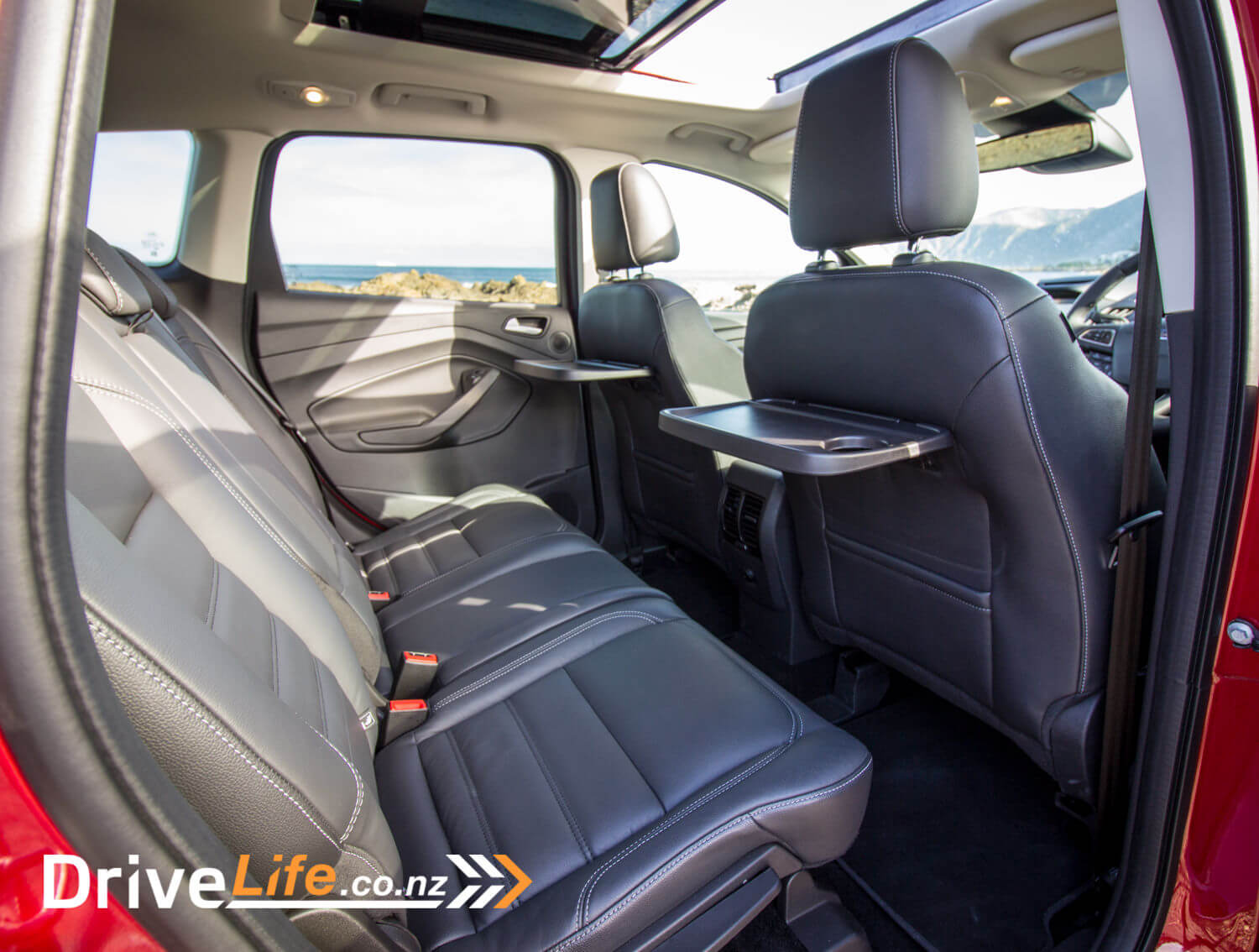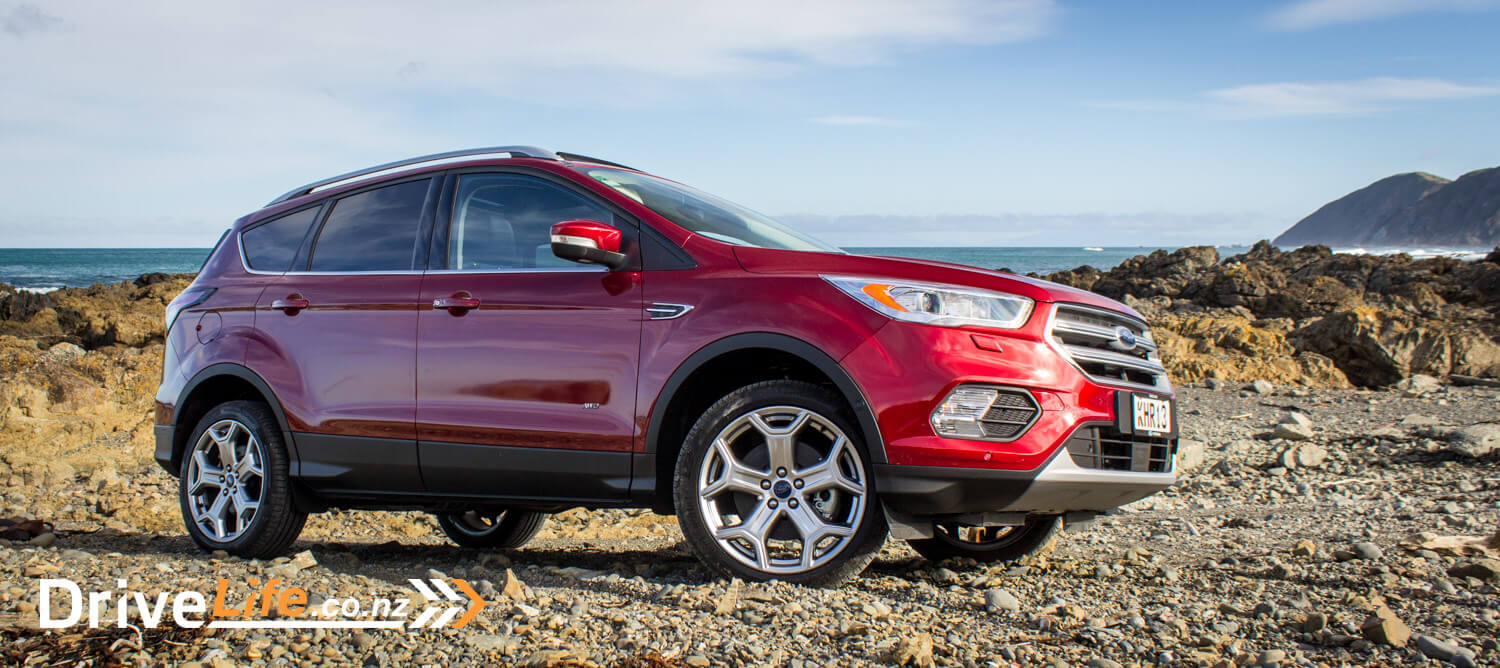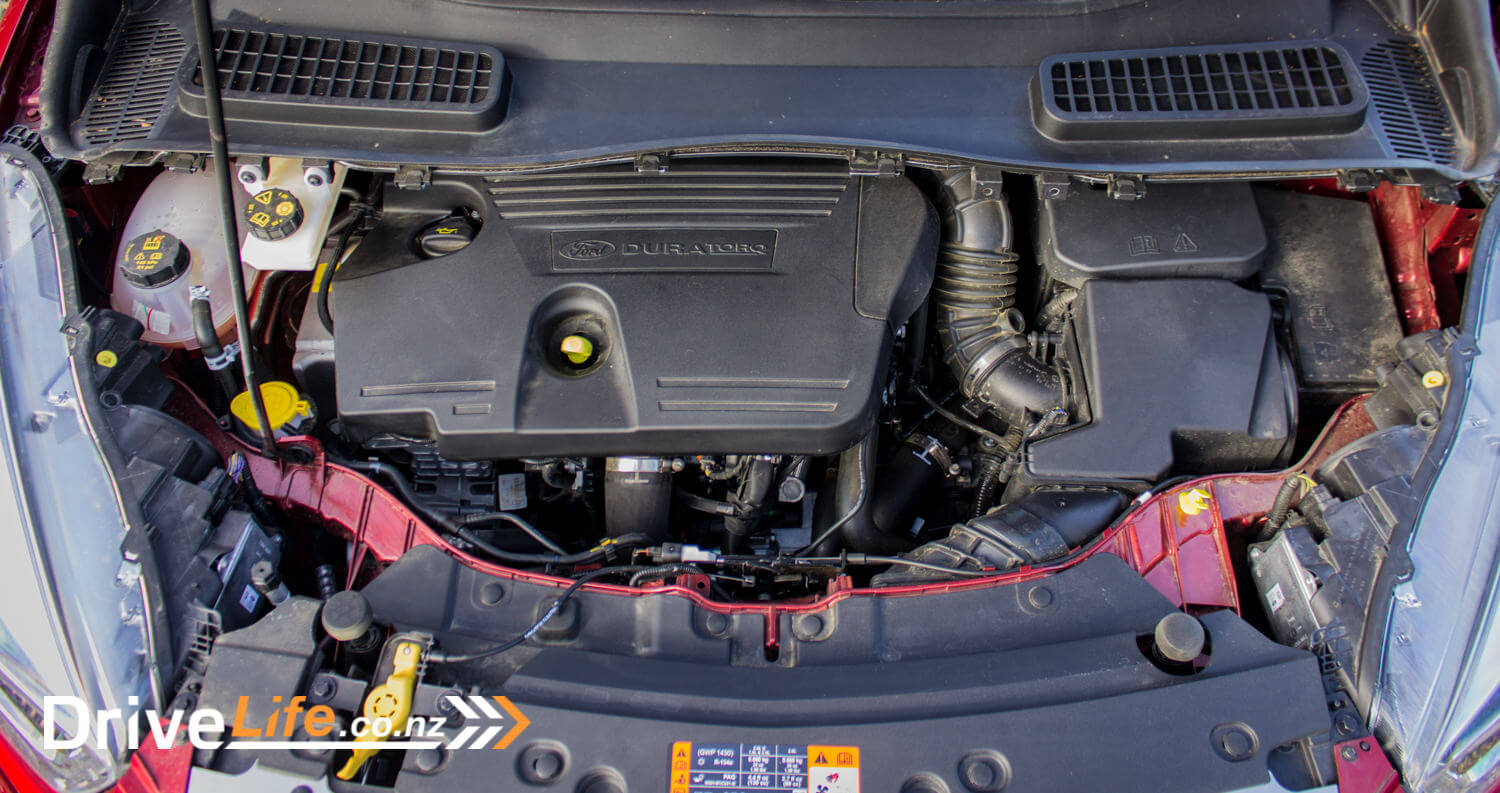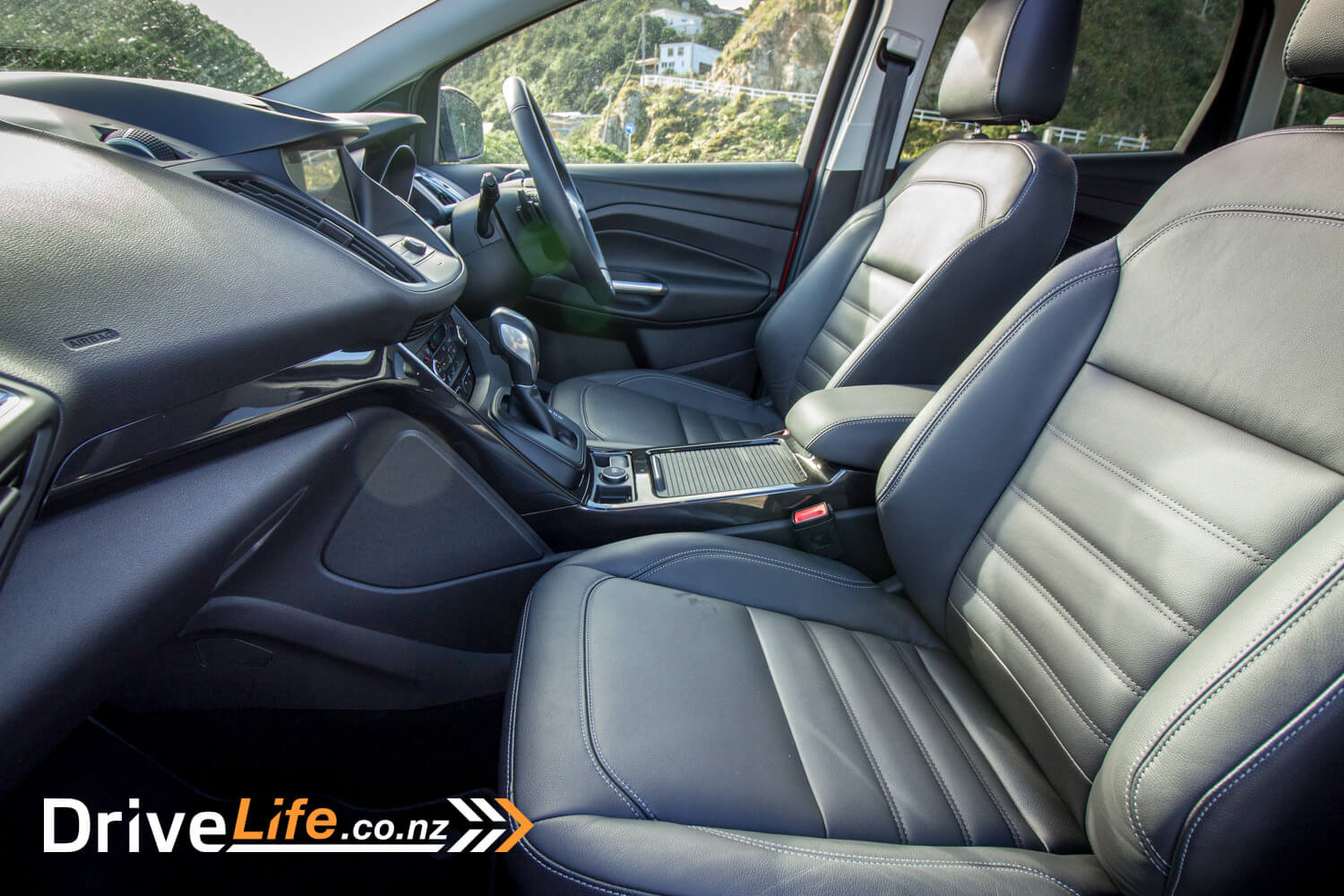The Ford Escape has been seen by some as a bit of an underdog; overshadowed by the CX-5 and Sportage, it hasn’t had the same high profile. With 2017, Ford aims to change that perception. The new Escape is decidedly bigger, bolder and much more in your face.
Could it be time to take the Escape seriously, as a contender in the mid-size SUV market?
The Range
The Escape sits between the EcoSport and the Everest in their SUV range. There’s a huge price range, with the base Escape model at $37,990 and the top of the range at $54,990 (which we tested).
As with most Ford models, you get your base Ambiente, then the Trend, then the top of the range Titanium. The Ambientes come with in either FWD or AWD with the 1.5-litre EcoBoost petrol engine which pumps out 134Kw and 240Nm of torque. The Trend versions have the same FWD/AWD option, and offer the 2.0-litre EcoBoost petrol (178Kw/345Nm) or 2.0-litre Duratorq diesel engine (132Kw/400Nm) as well as the 1.5 EcoBoost. The Titanium goes all out with AWD only and a choice of either 2.0-litre diesel or petrol power.
As you can imagine, there’s a list of standard features with each model, rising to max out with the Titanium. Touching on only the ‘important’ features, the Ambiente comes with an electric park brake, cruise control with speed limiter, Hill Start Assist, a reversing camera, rear park sensors, 17” alloys, front fog lights, DRLs, heated mirrors, dual zone climate AC, a leather steering wheel, 8” touchscreen display, Apple CarPlay and Android Auto capability, SatNav, voice control and Bluetooth. That’s not a bad list for a base model, especially when you throw SatNav in there.
The Trend goes a little further, with the addition of Blind Spot Information System, Active City Safe (braking), privacy glass for rear passengers and the back door, 18” alloys, auto headlights, auto-folding mirrors with puddle lamps, auto wipers, auto-dimming rear-view mirror, and a leather gear shifter.
For your top-range Titanium, you can then add Active Park Assist, adaptive cruise control, Driver Alert (drowsiness alert), Forward Alert, front parking sensors, keyless entry and start, automatic and auto-levelling Active Bi-Xenon headlights, LED DRLs, an automatic tailgate, 19” alloys, heated front seats, 10-way power driver’s seat, trays mounted on rear of front seats (handy!), leather seats and a 9-speaker Sony audio system. You could say the Titanium has all the bells and whistles you could want.
The Escape also comes with the MyKey feature, where you can program the car key to reduce the car’s top speed and limit the stereo volume.
First Impressions
When I first picked up the Escape, first impressions were good. In Ruby Red, our test car looked pretty darn fine. It’s great that you can get a selection of ten colours for the Escape. It looks much more like a ‘real’ SUV than some of its competitors, especially with that rear end with its almost vertical rear window. Many medium-sized SUVs now have a sharp angle on the back window and while it looks sexy, it cuts down on storage space.
The reality is that the Escape looks pretty much like a mini Everest. That’s not to say it’s too mini – forget the Escape of the past – or even the Kuga it replaces – this is a much bigger car and one that is in the real SUV range, and not a pretender. Climbing inside the car just reinforces this – there’s plenty of room, the front windscreen is a mile away and the rear of the car seems incredibly far back. And you do have to climb up into it – compared to the car-like CX-5 and Sportage, the Escape is more SUV than crossover. The Escape is only available as a 5-seater.
Opinions were polarised when I asked other people about the car – it seems to come across as a love it/not love it and that’s pretty much it. On the whole and in the flesh, it’s a good looker. Some felt it was a bit clunky at the front, but my thoughts were it’s up there with the latest design trends.
The Inside
Is it dark inside with lots of black plastic? Yes. Luckily the Titanium comes with a full length sunroof, and for my entire time with the car I left the blind open. The natural light makes a huge difference to the airiness of the interior.
General visibility looking out is excellent – the windows are deep, and the D pillar doesn’t block as much as other SUVs in this range that have a more stylish (angular) rear-end. You do get Blind Spot Assist too of course.
While general visibility is top-notch, the base of the A pillars is extremely FAT, with a large Sony speaker at the base. While you sit much higher in the Escape than a Sportage or CX-5 (and so sit above the A pillar base more), it still blocks a lot of your line of sight when looking forward at those angles.
The steering wheel feels nice, nothing fancy but leather wrapped. The controls are simple and work perfectly. With adaptive cruise, the controls to adjust the distance between cars (on the wheel) is nicely simple. Some cars I’ve tested make it all a little bit too complicated.
I got comments from passengers on the SYNC3 touchscreen system in the Escape, and I had to agree with them. The physical buttons to drive the touchscreen are at a funny angle, almost leaning over to the point where it’s a bit hard to read the writing on the buttons, and they are a little fiddly to use. It’s great that there’s a good ‘ole volume knob right in the middle of the buttons, and I appreciated even more that a press of the volume knob turned the audio off. Lots of systems only mute the audio or pause the track. Sometimes it’s best to just leave it off. Nice too that there’s a ‘display’ button which turns it off completely.
Another thing about the display and the buttons below it – because the touchscreen is quite a long way back, it’s a bit of a reach the onscreen buttons. Not the end of the world, but it could do with a bit of redesigning. The display is quite crisp, and the screens are of a modern design, with nice touches like Album Art shown for each track you play.
The audio system itself is excellent. The Titanium models come with a 9-speaker Sony system, and the quality is right up there. The bass was so good, I had the interior mirror vibrating quite a bit.
Seat comfort is just fine, and I could easily see myself driving the Escape to Auckland and back in comfort. The Titanium has a powered driver’s seat with both front seats with 3-stage heating. I may be (am) getting older as I do like my heated seats these days.
The stalks on the steering wheel were fine, but one I constantly struggled with was the rear wiper button. It’s a (very) small toggle switch at the end of the wiper stalk, but you need a child’s fingers to be able to switch between off, intermittent and on. The other stalk end button turns the active lane assist off and on, and this was easier to use as it’s just a push in for on/off button.
There’s plenty of room in the front, and rear legroom is above average for the class. Rear seat passengers are spoiled with flip-up trays, complete with a cup holder. The cynical part of me thinks the cup holder is exactly the right size hole for a McDonald’s soft drink, but I may be wrong. It’s a real shame that only the Titanium models come with the trays, and it’s not an option on the lower models. I could see a lot of families with small children wanting this feature.
The VW Tiguan has these trays in all of their models.
The boot is pretty usable at 406 litres with the rear seats up, although you only get a space saver spare. The automatic tailgate works well, and was useful when arms were loaded up with bags of shopping.
The Drive
I mentioned that it felt like the Escape is more like an SUV than a Crossover, and driving it, you really notice that. You sit high – it’s no Prado, but you really feel like you are so much more in an SUV than if you were in a CX-5. I think the Escape may have been a little disadvantaged here as I had seconds before dropped off an MX-5 RF, then stepped (climbed) up into the Escape. Still, this has its plus points; visibility over traffic is excellent.
A high height you would think would mean a bit rolling on the corners, and you’d be right. The Escape grips well with its 235/45/19 Continental tyres, but body roll is much more evident than the CX-5 and co, and there’s a reasonable amount of understeer if you push on. Still, this also means that the ride is good. In fact, the ride borders on excellent – bumps are soaked up nicely.
Again, the Escape would make a great Auckland to Wellington drive car.
Performance from the 2.0-litre Duratorq diesel turbo is very good. It’s no rocket, but that 400Nm of torque will get you places quickly. Acceleration off the mark is effortless and relatively quiet. In fact, the performance can surprise you, as full-throttle acceleration is quiet and quick, and you need to look at the speedo to watch just how fast you are going. Mid-range performance is excellent; motorway driving and passing is a breeze.
The 6-speed auto in the Escape is perfect: silky smooth changes, it does exactly what it should when it should. Spot on, Ford.
Don’t expect too much steering feel from the Escape – it’s a little dead in the steering department. Add to this a very upright driving position, and it’s a car that doesn’t encourage being pushed too much around any bends. But still, even on a twisty sort of road, you can still feel confident that it’s going to get around corners just fine. I’d almost say it almost inspires confidence, and the brakes too are up to the mark, with a reasonable amount of feel. Quite handy when you are pushing 1700 kilos about.
Another safety feature for the Titanium models is the standard AWD. This too helps with building that confidence, let alone extra grip in general. It’s nice that you can select the Intelligent AWD icon for the driver’s information display, and it was interesting that the icon shows you how much drive is going from whichever wheel at any time. The AWD Escape pushes drive to the rear wheels quite a bit – even on moderate acceleration. I was expecting to see almost all the drive going to the front wheels pretty much all the time, but more often than not you can see a good amount of drive being pushed to the rear wheels. You don’t have any options or control over the AWD system – it’s full time, and that’s it. You don’t get any drive selection modes for mud, snow or anything like that.
The full-length sunroof (which opens to halfway) is pretty handy. I don’t generally use a sunroof in a car too much, but with the blind open all the time, it seemed a good idea. Even on the motorway there wasn’t much buffeting at all. There’s a small pop-up deflector which helps with this.
SatNav is simple to use, and I appreciated that you just enter it as it is written – number first, then street, suburb etc. Good too that you get the turn-by-turn instructions in the driver’s information display, but a shame that the speed limit for the road you are on isn’t shown in the same display. It does show the speed limit on the main touchscreen, so that’s something.
The Escape Titanium comes with park assist and it works well. I liked that you could hit the button to turn it on to start looking for a parallel park, and then hit the button again to get it to look for an angle park. When angle parking, it did seem to have a couple of cracks at getting the car nice and straight, when I could have got it in there in one go but hey, it’s a good party trick.
I only managed to get 300ks on the Escape, and averaged 7.8L/100km. That’s a fair way over the stated combined rating of 5.4l/100km.
The Competition
No surprises here. Crowded market segment, or what?
| Brand / Model | Engine | Power, Kw/Torque, Nm | Fuel L/100km | Price Highest to Lowest | |
| Toyota RAV4 Limited AWD | 2.2 litre 4-cylinder diesel turbo | 110/340 | 6.7 | $61,990 | |
| Volkswagen Tiguan Highline AWD | 2.0 litre 4-cylinder diesel turbo | 110/340 | 5.7 | $59,990 | |
| Skoda Kodiaq TDI AWD | 2.0 litre 4-cylinder diesel turbo | 140/400 | 5.7 | $58,290 | |
| Holden Captiva LTZ AWD 7-seater | 2.2 litre 4-cylinder diesel turbo | 135/400 | 8.1 | $56,990 | |
| Hyundai Tucson Elite AWD | 2.0 litre 4-cylinder diesel turbo | 136/400 | 6.8 | $56,990 | |
| Mitsubishi Outlander VRX AWD 7-seater | 2.3 litre 4-cylinder diesel turbo | 112/366 | 6.2 | $56,990 | |
| Mazda CX-5 Limited AWD | 2.2 litre 4-cylinder diesel turbo | 129/420 | 5.7 | $56,795 | |
| Kia Sportage GT Line AWD | 2.0 litre 4-cylinder diesel turbo | 136/400 | 6.8 | $54,990 | |
| Ssangyoung Rexton SPR AWD | 2.2 litre 4-cylinder diesel turbo | 130/420 | 7.4 | $54.990 | |
| Ford Escape Titanium diesel AWD | 2.0 litre 4-cylinder diesel turbo | 132/400 | 5.4 | $54,990 | |
| Nissan X-Trail Ti AWD | 2.5-litre 4-cylinder petrol | 126/226 | 8.3 | $53.490 |
The Pros and Cons
| Pros | Cons |
|
|
What do we think of it?
Straight up: I didn’t really think I’d like the Escape. I’m not sure why, but I felt it wouldn’t be a nice drive. I think I wasn’t really looking to see anything special and no surprises. The Escape isn’t really special but it does surprise: this is a competent car, with a great equipment levels – even in the base model.
It drives well. It doesn’t handle as well as the 2017 CX-5, but then not many SUVs would. Some people wouldn’t care – they don’t want an SUV they can throw around corners. They want something with good visibility, good space inside and an easy drive. The Escape ticks these boxes.
I was torn with having to rate the Escape Titanium diesel. When doing the Pros and Cons table, I struggled with coming up with genuine things that I didn’t like that were worth mentioning. Eventually I agreed with myself that it’s a 4.0-chevron car. It does exactly what it says on the box, and does those things well.
4.0 chevrons
| Vehicle Type | Medium AWD SUV |
| Starting Price | $37,990 |
| Tested Price | $54,990 |
| Engine | 2-litre, turbo-intercooled 4-cylinder diesel |
| Transmission | 6-speed automatic |
| 0 – 100 kph, seconds | n/a |
| Kerb Weight, Kg | 1,716 |
| Length x Width x Height, mm | 4524 x 1838 x 1677 |
| Cargo Capacity, litres | 406/1603 |
| Fuel Tank, litres | 60 litres |
| Fuel Efficiency | Stated Combined: 5.4l/100km
Real World: 7.8l/100km |
| ANCAP Safety Ratings | 5 Star |
| Warranty | 3 years unlimited kilometres
3 years Roadside Assistance |


